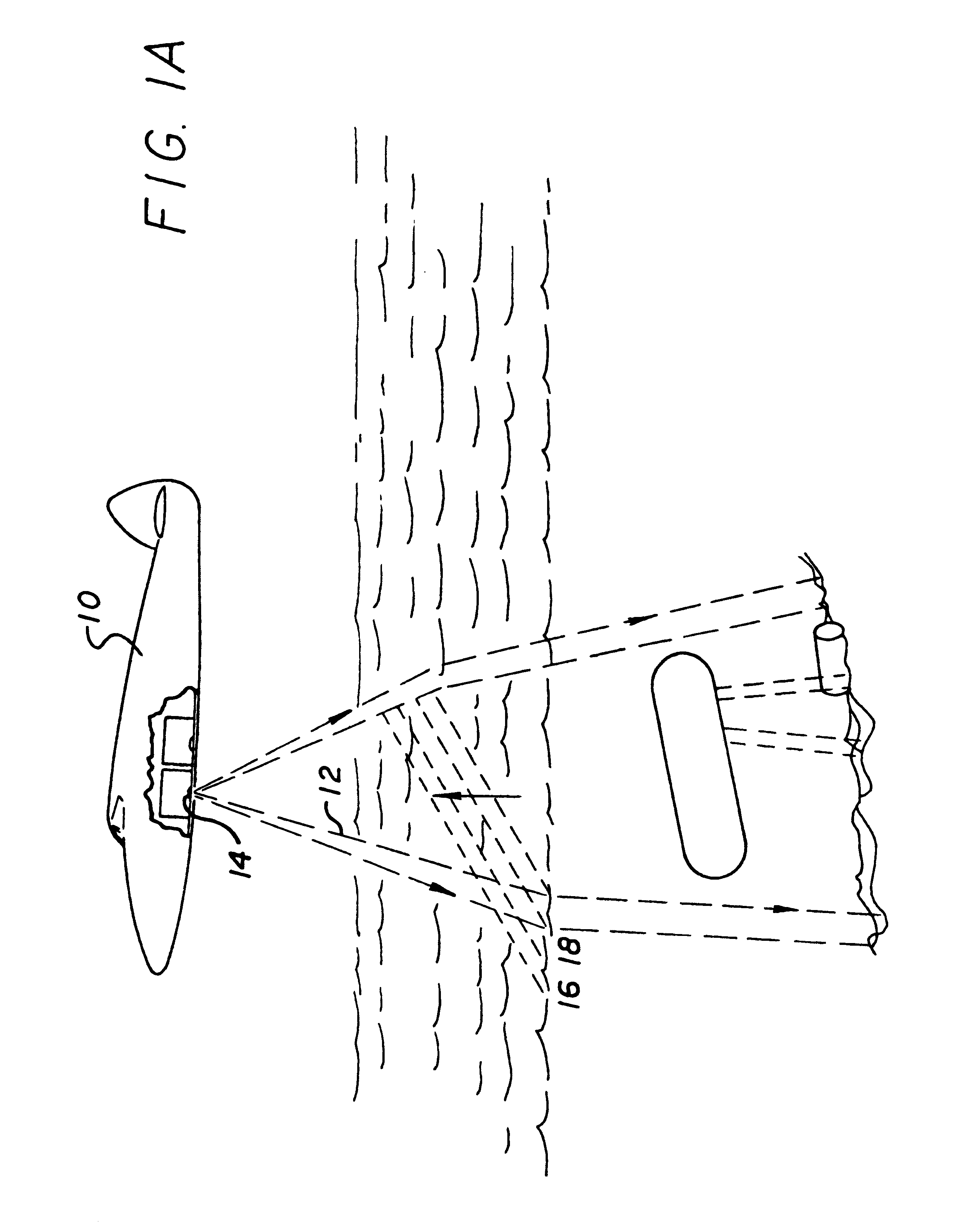Confocal-reflection streak lidar apparatus with strip-shaped photocathode, for applications at a wide range of scales
a lidar and strip-shaped technology, applied in the field of turbid medium volume imaging, can solve the problems of insufficiently optimizing bench-scale lidar configurations, most or all previous lidar workers have not fully appreciated the critical importance of confocal conditions, and the speed of electronic and mechanical scanners is eliminated. , to achieve the effect of enhancing the target signature, reducing the cost of optical energy, and reducing the cost of operation
- Summary
- Abstract
- Description
- Claims
- Application Information
AI Technical Summary
Benefits of technology
Problems solved by technology
Method used
Image
Examples
Embodiment Construction
The present invention provides a system for detecting targets located in a light-reflecting medium, such as dirty, hazy or foggy air; and such as water or living tissue. The system can be used to observe a water interface, the structure of the medium—including the distribution of particulate matter and suspended or otherwise embedded bodies—and a bottom or far-interior-surface profile. More particularly the invention can be used to detect objects in any medium through which light can pass, even if absorbed and scattered, provided that some substantially directly reflected light can be obtained.
The system includes a light source for producing a series of discrete narrow, fan-shaped pulse beams which have a modified non-uniform intensity distribution to produce uniform signal-return. The reflected portions of the pulse beam are received by a detection system comprising receiving optics, a streak tube and an imaging area detector.
In operation, the invention by some means physically shi...
PUM
 Login to View More
Login to View More Abstract
Description
Claims
Application Information
 Login to View More
Login to View More - R&D
- Intellectual Property
- Life Sciences
- Materials
- Tech Scout
- Unparalleled Data Quality
- Higher Quality Content
- 60% Fewer Hallucinations
Browse by: Latest US Patents, China's latest patents, Technical Efficacy Thesaurus, Application Domain, Technology Topic, Popular Technical Reports.
© 2025 PatSnap. All rights reserved.Legal|Privacy policy|Modern Slavery Act Transparency Statement|Sitemap|About US| Contact US: help@patsnap.com



